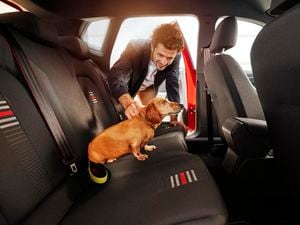Driving with a dog in the car makes motorists more cautious and less stressed
Study suggests our four-legged friends could make the roads safer.

Motorists travelling with a dog in the vehicle tend to be more cautious and less stressed, a new survey suggests.
Fifty-four per cent of 2,000 dog-owning driving licence holders told Seat they drive more carefully when travelling with a pet.
The statistics are heavily weighted towards young drivers – the most likely age group to be involved in a road incident – with 69 per cent of 18-24-year-olds saying they’re more cautious when driving with their dog.
Meanwhile, drivers in London and the north-east were more likely to be more careful than other regions, with 70 and 66 per cent of motorists respectively being more cautious.
Dogs could also reduce road rage, with 35 per cent saying they feel less stressed behind the wheel with a canine for company.
However, despite the positive aspects of travelling with a pet, over a third didn’t know if any rules governed doing so and a fifth admitted to not restraining their dog in the car.
Not keeping your dog secure not only risks the safety of the animal and other passengers in the event of a collision, the driver could be fined up to £5,000 and receive nine points on their licence for driving without due care and attention.

Nigel Griggs, head of aftersales at Seat UK, said: “Everyone knows the British public is passionate about its dogs, however, this study confirms that having their best friend in the car can contribute to safer driving while also having a positive mental health benefit by reducing stress levels. It appears to be a win win.
“Motorists still need to make sure they’re keeping their dogs safe while travelling too, and finding comfortable and secure in-car pet accessories to properly restrain pets is as important as using your own seat belt.”





